
The Enigmatic Wilderness of Attapeu Province
Discover the untouched beauty and cultural heritage of Attapeu Province, Laos – an adventurer's paradise with lush forests, stunning waterfalls, and authentic local experiences.
Attapeu Province, located in the southeastern part of Laos, is a hidden gem that offers a blend of natural beauty and cultural richness. This remote region is less explored compared to other parts of Laos, making it a perfect destination for adventurous travelers seeking tranquility and authenticity. The province is predominantly covered with lush forests, towering mountains, and cascading waterfalls, providing a stunning backdrop for eco-tourism activities. One of the highlights of Attapeu is the Xe Pian National Protected Area, which is home to a diverse array of wildlife and plant species. Visitors can embark on guided treks to explore the dense jungle, spot rare animals, and learn about the local flora. Another must-see is the mesmerizing Tad Saepha Waterfall, where multiple tiers of water flow gracefully over rocks, creating a serene and picturesque setting. Cultural enthusiasts will appreciate a visit to the local villages, where they can interact with the ethnic minorities and experience traditional Lao life firsthand. The province is also known for its ancient temples and archaeological sites, which provide a glimpse into its rich historical past. Despite its remote location, Attapeu offers a range of accommodation options, from rustic homestays to comfortable guesthouses, ensuring a pleasant stay for every traveler.
Local tips in Attapeu Province
- Pack light and breathable clothing as the weather can be hot and humid. Don't forget insect repellent.
- Hire a local guide when trekking in the Xe Pian National Protected Area for a safer and more informative experience.
- Carry enough cash as ATMs are scarce in the remote areas of Attapeu.
- Respect the local customs and traditions, especially when visiting villages and temples.
- The best time to visit is during the dry season from November to April for more comfortable travel conditions.
The Enigmatic Wilderness of Attapeu Province
Attapeu Province, located in the southeastern part of Laos, is a hidden gem that offers a blend of natural beauty and cultural richness. This remote region is less explored compared to other parts of Laos, making it a perfect destination for adventurous travelers seeking tranquility and authenticity. The province is predominantly covered with lush forests, towering mountains, and cascading waterfalls, providing a stunning backdrop for eco-tourism activities. One of the highlights of Attapeu is the Xe Pian National Protected Area, which is home to a diverse array of wildlife and plant species. Visitors can embark on guided treks to explore the dense jungle, spot rare animals, and learn about the local flora. Another must-see is the mesmerizing Tad Saepha Waterfall, where multiple tiers of water flow gracefully over rocks, creating a serene and picturesque setting. Cultural enthusiasts will appreciate a visit to the local villages, where they can interact with the ethnic minorities and experience traditional Lao life firsthand. The province is also known for its ancient temples and archaeological sites, which provide a glimpse into its rich historical past. Despite its remote location, Attapeu offers a range of accommodation options, from rustic homestays to comfortable guesthouses, ensuring a pleasant stay for every traveler.
When is the best time to go to Attapeu Province?
Iconic landmarks you can’t miss
Sae Pong Lai Waterfall
Experience the breathtaking beauty of Sae Pong Lai Waterfall in Hinlat, Laos – a hidden gem perfect for nature lovers and adventure seekers.

Saya Setthathirath Park ສວນສາທາລະນະ ເຈົ້າໄຊຍະເສດຖາທິລາດ
Experience the tranquility and vibrant culture of Attapeu at Saya Setthathirath Park, a beautiful green oasis perfect for relaxation and exploration.

Tad Faed Waterfall
Discover the breathtaking beauty of Tad Faed Waterfall, a serene natural wonder in southern Laos perfect for relaxation and outdoor adventures.

ວັດຫລວງ Wat Luang
Explore the serene beauty of Wat Luang in Attapeu, a cultural gem with rich Buddhist heritage and stunning architecture.

Nong Fa Lake
Discover the serene beauty of Nong Fa Lake, a natural oasis in Laos perfect for relaxation and outdoor adventures.

Ban Kornghang Samakkhixay Attapeu Laos
Discover the local culture and vibrant atmosphere at Ban Kornghang Samakkhixay, a premier shopping mall in Attapeu, Laos, offering unique crafts and delicious cuisine.

Dong Ampham National Biodiversity Conservation Area
Explore the serene beauty of Dong Ampham National Biodiversity Conservation Area, a nature preserve rich in biodiversity and adventure in Laos.

Dong Hua Sao National Protected Area
Explore the breathtaking landscapes and diverse wildlife of Dong Hua Sao National Protected Area, a paradise for nature lovers in Laos.

Tad Hua Khon Waterfall
Experience the serene beauty of Tad Hua Khon Waterfall, a breathtaking natural attraction in Laos that captivates nature lovers and adventurers alike.

Attapu
Explore Attapu, Laos - a serene destination rich in natural beauty, vibrant culture, and authentic experiences waiting to be discovered.

Unmissable attractions to see
Tad Koo Waterfall
Experience the breathtaking beauty of Tad Koo Waterfall, a serene escape in Houay Kong, Laos, perfect for nature lovers and adventure seekers.

Saya Setthathirath Park ສວນສາທາລະນະ ເຈົ້າໄຊຍະເສດຖາທິລາດ
Discover serenity and cultural richness at Saya Setthathirath Park, a lush green escape in Attapeu, perfect for relaxation and exploration.

Tad Faed Waterfall
Experience the tranquility and natural beauty of Tad Faed Waterfall in Dan, Laos, a perfect getaway for adventurers and nature lovers alike.

Tad Sepa, Sepa waterfall
Explore the breathtaking beauty of Tad Sepa Waterfall in Hinlat, Laos, where nature meets tranquility in a stunning natural setting.

Tad Hua Gan Waterfall
Experience the serene beauty of Tad Hua Gan Waterfall, a stunning natural gem in Laos, perfect for relaxation and adventure amidst lush surroundings.

Việt Nam–Laos-rajamerkki 790
Discover the breathtaking landscapes and rich cultural heritage at Việtnam–Laos-Rajamerkki 790, a unique border attraction of Southeast Asia.

แซป่องไล
Experience the serene beauty and rich culture of Hinlat, Laos, a hidden gem for nature lovers and adventurous tourists alike.

Tad Jarou Halang (Tad Tayicseua)
Experience the tranquil beauty of Tad Jarou Halang, a picturesque waterfall in Laos, perfect for relaxation and memorable adventures in nature.
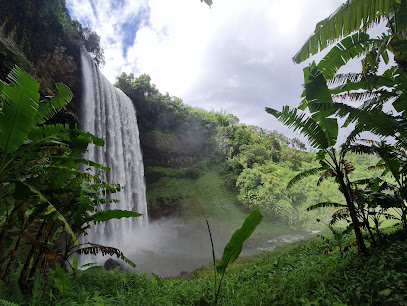
Tiger Waterfall
Explore the breathtaking beauty of Tiger Waterfall, a hidden gem in Laos, offering stunning cascades and serene landscapes for all nature lovers.

Tad Koy Loy Far Waterfall
Explore the enchanting Tad Koy Loy Far Waterfall in Nam On, Laos, a serene escape into nature with stunning views and rich local culture.
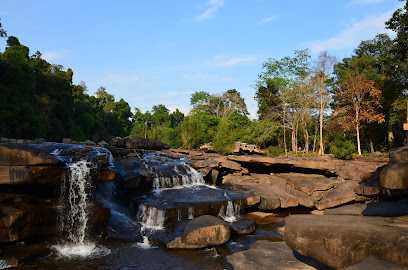
ຕາດພອກ Phork Waterfall
Experience the tranquility and natural beauty of Phork Waterfall in Ban Kong Han, a hidden gem in Laos perfect for relaxation and adventure.

ນ້ຳຕົກຕາດ ກຣອງດຶງ Krongdeung Waterfall
Explore the tranquil beauty of Krongdeung Waterfall in Phouvong, Laos, a hidden gem surrounded by lush nature and breathtaking views.

Xenamnoy River Bridge
Experience the breathtaking beauty and tranquility of the Xenamnoy River Bridge, a hidden gem in nature's embrace perfect for photography and relaxation.

Dong Ampham National Biodiversity Conservation Area
Discover the lush landscapes and rich biodiversity of Dong Ampham National Biodiversity Conservation Area, a tranquil retreat for nature lovers in Laos.

Tad Jarou Kiet Oak
Explore the serene beauty of Tad Jarou Kiet Oak, a tranquil tourist attraction in Ban Latassasine, Laos, perfect for nature lovers and relaxation seekers.

Essential places to dine
John Attapeu Restaurant
Experience the rich flavors of Laotian cuisine at John Attapeu Restaurant - where authentic dishes meet warm hospitality in Attapeu.
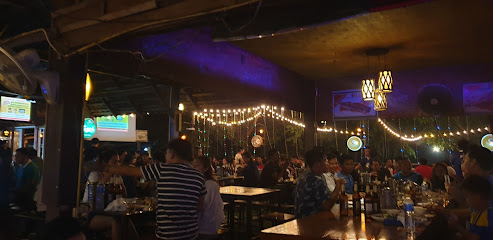
Crystal Dragon Restaurant ຮ້ານຊີ້ນດາດແກ້ວມັງກອນ
Experience authentic Laotian barbecue at Crystal Dragon Restaurant in Attapeu – where tradition meets flavor.

Kieng Noy Restaurant
Discover authentic Laotian cuisine at Kieng Noy Restaurant in Attapeu - where every dish tells a story.

Nhà Hàng - Khách Sạn - Karaoke LANE XANG
Discover the flavors of Laos while enjoying lively karaoke at Nhà Hàng - Khách Sạn - Karaoke LANE XANG in Ban Thak Ta Mo.

laty restaurant
Experience authentic Laotian flavors at Laty Restaurant in Attapeu – where tradition meets taste.

P&S GARDEN RESTAURANT
Experience authentic local cuisine amidst serene gardens at P&S Garden Restaurant - a must-visit for travelers seeking tranquility and flavor.
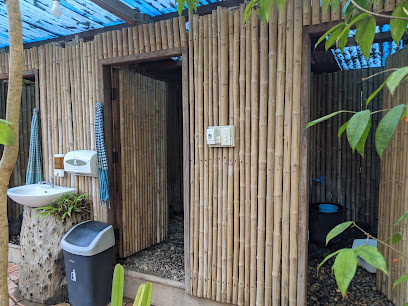
Đức Lộc 03 Restaurant
Experience authentic Vietnamese flavors at Đức Lộc 03 Restaurant in Attapeu – where every dish is crafted with love and tradition.

Dokchampa Restaurant
Discover authentic Laotian cuisine at Dokchampa Restaurant in Attapeu - where every dish reflects the rich culinary heritage of Laos.

Lao Inter 1 Restaurant
Experience authentic Laotian cuisine at Lao Inter 1 Restaurant with stunning riverside views and vibrant local atmosphere.

Me Soukchai Restaurant
Savor the essence of Laos at Me Soukchai Restaurant - a must-visit destination for authentic Laotian cuisine.

Pailin Restaurant
Discover the flavors of Laos at Pailin Restaurant, where authentic dishes meet warm hospitality in Attapeu.

Ms. Sia Restaurant (ຮ້ານອາຫານ ນາງເຊຍ)
Savor authentic Laotian flavors at Ms. Sia Restaurant in Attapeu – a must-visit for food lovers exploring Laos.

Fish Khao Piak Attapu
Discover authentic Laotian cuisine at Fish Khao Piak Attapu; savor traditional dishes like Khao Piak in a warm and inviting atmosphere.

Delicious soup
Discover authentic Lao cuisine at Delicious Soup - indulge in flavorful noodle soups amidst a charming atmosphere.

Delicious Restaurant Attapu (ຮ້ານແຊບ ອັດຕະປື)
Experience the essence of Lao cuisine at Delicious Restaurant Attapu, where authentic flavors meet warm hospitality.

Markets, malls and hidden boutiques
Viettien Attapeu
Explore the vibrant world of men's fashion at Viettien Attapeu, where local culture meets modern style in the heart of Attapeu.

ACUONG 52
Explore ACUONG 52 in ອັດຕະປື, a must-visit home goods store showcasing local craftsmanship and unique decor items.

Coca-Cola Attapeu
Discover the flavors of Laos at Coca-Cola Attapeu, a grocery store offering local delicacies and international snacks in a vibrant atmosphere.

ຮ້ານ ວັດສະດຸກໍ່ສ້າງ ໄຊປະສົງ
Discover the vibrant shopping scene at ຮ້ານ ວັດສະດຸກໍ່ສ້າງ ໄຊປະສົງ, where local culture meets modern retail in ແຂວງອັດຕາປື.

ຮ້ານຂາຍເສືອໃໝ
Explore unique clothing styles and traditional garments at ຮ້ານຂາຍເສືອໃໝ in Attapeu, a must-visit for every fashion-loving traveler.

ຮ້ານສົມໝາຍ ຂາຍເຄື່ອງຍ່ອຍ ແລະ ນໍ້າກ້ອນອານາໄມ
Discover the authentic taste of Laos at ຮ້ານສົມໝາຍ, your go-to grocery store for local delicacies and culinary essentials.

AM Minimart
Discover convenience and local flavors at AM Minimart, the essential stop for tourists in Attapeu, Laos.

ຮ້ານຂາຍເຄື່ອງຍ່ອຍ Tuan Thuy - Tạp Hóa Tuấn Thủy
Discover local flavors and essentials at Tuan Thuy, the charming variety store in Attapeu, where culture meets convenience.

Trung tâm chăm sóc rửa xe Attapeu
Discover unique home goods and local treasures at Trung tâm chăm sóc rửa xe Attapeu, the perfect shopping destination in Attapeu.

Cửa hàng tiện ích NSA1
Discover everyday essentials at Cửa hàng tiện ích NSA1, the perfect variety store in Attapeu for tourists seeking convenience and local flavor.

ร้านลีลา
Experience the charm of traditional Laotian craftsmanship at ร้านลีลา, a must-visit store in Attapeu for authentic souvenirs and local culture.

ຮ້ານຄຳ ເລັ່ງສົມພອນ
Explore the cultural richness of Attapeu at ຮ້ານຄຳ ເລັ່ງສົມພອນ, a treasure trove of local crafts and artisan goods.

ຮ້ານຂາຍນໍ້າ ໄອເດັຍລີ
Discover the flavors of Laos at ຮ້ານຂາຍນໍ້າ ໄອເດັຍລີ, a local grocery store in Attapeu offering fresh produce and authentic culinary delights.

ເຮືອນນາງຕີ່ງຂາຍໄກ່ປອກເປັດປອກ
Explore the local grocery store for fresh produce, unique delicacies, and a taste of authentic regional culture.

ຮ້ານນາງສົມຄິດ ຂາຍເຄື່ອງຍ່ອຍ
Explore authentic local crafts and unique souvenirs at ຮ້ານນາງສົມຄິດ ຂາຍເຄື່ອງຍ່ອຍ in Xaisetha, a treasure trove for tourists seeking unique finds.

Essential bars & hidden hideouts
Outback Laos
Experience the unique blend of Western flavors and Laotian hospitality at Outback Laos in Luang Prabang.

John Attapeu Restaurant
Experience authentic Laotian cuisine at John Attapeu Restaurant, where local flavors and warm hospitality create memorable dining experiences.
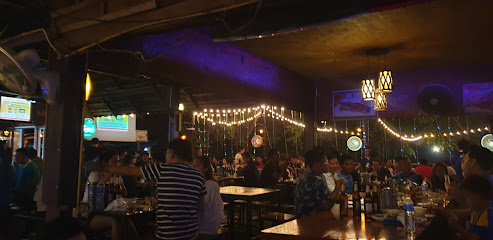
Café Amazon Attapeu
Discover the charm of Café Amazon Attapeu, where rich coffee blends meet a cozy atmosphere, perfect for relaxation and cultural immersion.

ອັດຕະປືໂອເຄ ຄາຣາໂອເກະ
Immerse yourself in the lively karaoke scene at ອັດຕະປືໂອເຄ ຄາຣາໂອເກະ in Attapeu, where fun and music come together for an unforgettable night.

Kieng Noy Restaurant
Experience authentic Laotian cuisine at Kieng Noy Restaurant in Attapeu, where traditional flavors meet warm hospitality.

Nhà Hàng - Khách Sạn - Karaoke LANE XANG
Experience the lively dining and karaoke atmosphere at Nhà Hàng - Khách Sạn - Karaoke LANE XANG, where delicious flavors meet vibrant entertainment.

laty restaurant
Discover the rich flavors of Laos at Laty Restaurant in Attapeu, where authentic cuisine meets warm hospitality.

Quán nhậu Attapeu 01
Experience the vibrant nightlife at Quán nhậu Attapeu 01, a lively wine bar in the heart of Laos offering a delightful selection of wines and local flavors.
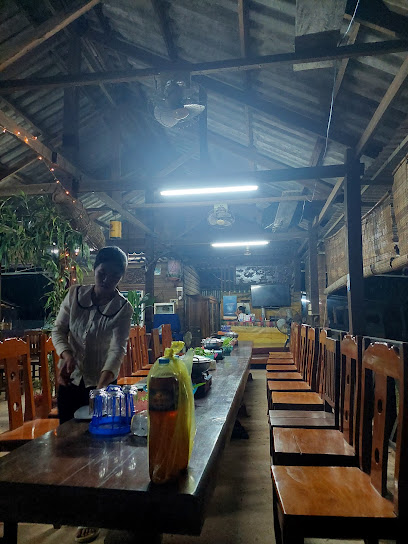
ຮ້ານຮົ່ມເດື່ອ ສັນທະນາ
Discover the magic of live music at ຮ້ານຮົ່ມເດື່ອ ສັນທະນາ, a vibrant piano bar in Laos offering an enchanting evening of entertainment and delightful cocktails.

ຮ້ານເຂົ້າປຸ້ນເຄື່ອງໃນຫມູ ສາວເເຫລ້
Experience the authentic flavors of Laos at ຮ້ານເຂົ້າປຸ້ນເຄື່ອງໃນຫມູ ສາວເເຫລ້ in Attapeu, where traditional dishes meet a warm atmosphere.

ເຝີກົກຂາມ
Experience the authentic flavors of Laos at ເຝີກົກຂາມ, a must-visit restaurant in Attapeu for an unforgettable culinary journey.

ຮ້ານອາຫານ ແລະ ບັນເທິງນ້ອງໄໝ່
Discover the authentic flavors of Laos at ຮ້ານອາຫານ ແລະ ບັນເທິງນ້ອງໄໝ່ in Attapeu, where every dish is a delightful journey through local cuisine.

Ms. Sia Restaurant (ຮ້ານອາຫານ ນາງເຊຍ)
Experience the authentic flavors of Laos at Ms. Sia Restaurant, where every dish tells a story of rich culinary traditions.

Asset Party Restaurant
Discover the authentic flavors of Laos at Asset Party Restaurant, a must-visit for culinary enthusiasts seeking local delights.

Relax time
Discover the flavors of Laos in a serene setting at Relax Time Restaurant, the perfect dining spot in Attapeu for tourists seeking local cuisine.

Local Phrases about Attapeu Province
-
- Helloສະບາຍດີ
[sa baai di] - Goodbyeຜິດຕູກ
[pid tuk] - Yesດີ
[di] - Noບໍ່
[bo] - Please/You're welcomeຟື້ຂາວ
[fe khao] - Thank youຂອບໃຈ
[khop chai] - Excuse me/Sorryຂໍດີຂອບໃຈ
[kho dai khop chai] - How are you?ໂດຍການທ່ຽວລາວ?
[do nakan thiao lao?] - Fine. And you?ໂດຍນ້ຳ ແລະ ທ່ຽວ?
[do nam le thiao?] - Do you speak English?ເຈົ້າເວ້າພາສາອັງກິດ?
[jao wa phasa angkit?] - I don't understandຂໍດີບໍ່ເຂົ້າ
[kho dai bo khao]
- Helloສະບາຍດີ
-
- I'd like to see the menu, pleaseຂ້ອຍຕ້ອງເບີ່ງເມນູນ, ກະລຸນ
[koi tong beng meng men nu, ka lun] - I don't eat meatຂ້ອຍບໍ່ເອົາຂາວ
[koi bo ao khao] - Cheers!ສະບາຍດີ
[sa baai di] - I would like to pay, pleaseຂ້ອຍຕ້ອງຈ່າຍ, ກະລຸນ
[koi tong chai, ka lun]
- I'd like to see the menu, pleaseຂ້ອຍຕ້ອງເບີ່ງເມນູນ, ກະລຸນ
-
- Help!ຊ່ວຍຄືນ
[sui khun] - Go away!ຍ້ອງຂື້ນ
[nyong kuen] - Call the Police!ໂທດອາການພິມພາ
[tho akhan phimpha] - Call a doctor!ໂທດທ່ຽວໝໍ
[tho thiao mo] - I'm lostຂ້ອຍອື່ນ
[koi un] - I'm illຂ້ອຍຄົນເປັນ
[koi khun pen]
- Help!ຊ່ວຍຄືນ
-
- I'd like to buy...ຂ້ອຍຕ້ອງຊື້...
[koi tong su...] - I'm just lookingຂ້ອຍເບິ່ງດິນ
[koi beng din] - How much is it?ເຄືອຂ້ອຍເຈົ້າ?
[keu koi jao?] - That's too expensiveນີ້ຖ້ວນຂອນເຫຼືອ
[ni tua nong huer] - Can you lower the price?ໜ້າທີ່ເຈົ້າຕົກເຈົ້າໄດ້ບ່ອນທໍ່?
[na thi jao tok jao dai bon to?]
- I'd like to buy...ຂ້ອຍຕ້ອງຊື້...
-
- What time is it?ເວລາແລ້ວ?
[welaa leo?] - It's one o'clockແລ້ວແທັດ
[leo thad] - Half past (10)ສິບ
[sip] - Morningເຊົ້າ
[sao] - Afternoonບ່ອງປະເທດ
[bong pathet] - Eveningເຈັດ
[chad] - Yesterdayວັນວື້ນ
[wan wun] - Todayມື້ນີ້
[me ni] - Tomorrowມື້ອື້ນ
[me un] - 1ໜຶ້ນ
[neun] - 2ສອງ
[song] - 3ສາມ
[sam] - 4ສີ
[si] - 5ຫ້ອງ
[haong] - 6ຫົກ
[hok] - 7ແປດ
[paet] - 8ແຈ້ງ
[jing] - 9ເກົ້າ
[kao] - 10ສິບ
[sip]
- What time is it?ເວລາແລ້ວ?
-
- Where's a/the...?ຢູ່ຫຍັງ...?
[yuu nyang...?] - What's the address?ທີ່ຢູ່ຫຍັງ?
[thi yuu nyang?] - Can you show me (on the map)?ເຈົ້າສະແດງຂ້ອຍດ້ວຍຂີ່?
[jao sa dang koi duay ki?] - When's the next (bus)?ກ່ອນວັນນັ້ນ...
[kong wan nan...] - A ticket (to ....)ຈໍານວນ...
[cham nuan...]
- Where's a/the...?ຢູ່ຫຍັງ...?
History of Attapeu Province
-
Attapeu Province, located in southeastern Laos, has a rich history of early human settlement. Archaeological findings indicate that the area was inhabited as far back as the Neolithic period. Stone tools and pottery fragments discovered along the rivers and in the caves suggest a thriving prehistoric community.
-
During the early centuries CE, the Champa Kingdom, a powerful maritime empire, exerted influence over parts of what is now Attapeu Province. The Champa were known for their advanced architectural, artistic, and maritime skills. The remnants of Champa culture, including temple ruins and stone inscriptions, can still be found in the province.
-
In the 14th century, Attapeu became part of the Lan Xang Kingdom, one of the largest and most powerful kingdoms in Southeast Asia. Founded by King Fa Ngum, Lan Xang, which means 'Land of a Million Elephants,' brought a period of prosperity and cultural development. Attapeu was an important region within this kingdom, contributing to its wealth and diversity.
-
In the late 19th century, Attapeu, along with the rest of Laos, came under French colonial rule as part of French Indochina. The French influence brought new infrastructure, including roads and administrative buildings, some of which still stand today. This period also saw the introduction of rubber plantations and other economic changes.
-
During the 1960s and 1970s, Attapeu Province was significantly impacted by the Vietnam War, known locally as the Secret War. The region was a stronghold of the Pathet Lao, the communist political movement in Laos. The Ho Chi Minh Trail, a vital supply route for North Vietnamese forces, passed through Attapeu, making it a target for heavy bombing campaigns. Evidence of this tumultuous period can still be seen in the form of bomb craters and unexploded ordnance.
-
After the end of the Vietnam War and the establishment of the Lao People's Democratic Republic in 1975, Attapeu began a slow process of reconstruction. Efforts have been made to revive traditional Laotian culture and heritage, including the preservation of local crafts, music, and dance. Today, the province is a vibrant blend of ancient traditions and modern developments.
-
Attapeu is home to a diverse mix of ethnic groups, including the Lao, Alak, Katu, and Ta-Oi peoples. Each group has its own unique cultural practices, languages, and traditions. Festivals, traditional clothing, and indigenous crafts play a significant role in the cultural identity of the province. Visitors can experience this rich tapestry of cultures through local markets, village tours, and cultural performances.
-
The natural beauty of Attapeu is a significant part of its cultural heritage. The province is known for its lush forests, waterfalls, and wildlife. Ecotourism initiatives have been developed to promote sustainable travel and conservation. Key attractions include the Xe Pian National Protected Area, Tad Sae Waterfall, and the scenic Bolaven Plateau. These natural sites offer a glimpse into the province's ecological richness and its importance to local communities.
Attapeu Province Essentials
-
Attapeu Province is located in the southeastern part of Laos. The nearest international airports are in Pakse and Vientiane. From Pakse, you can take a domestic flight to Attapeu Airport, which has limited flights. Alternatively, you can travel by bus or hire a private car from Pakse to Attapeu, a journey that takes approximately 4-6 hours. From Vientiane, you can take an overnight bus to Attapeu, which takes around 12-14 hours.
-
In Attapeu Province, local transportation options include tuk-tuks, motorbike taxis, and songthaews (shared pickup trucks). Renting a motorbike or bicycle is also a popular and convenient way to explore the area at your own pace. For longer distances, you can hire a private car or take a local bus, although schedules can be irregular.
-
The official currency in Laos is the Lao Kip (LAK). While some hotels and larger establishments in Attapeu may accept credit cards, it's advisable to carry cash, especially when visiting smaller shops, markets, and rural areas. ATMs are available in Attapeu town, but it's a good idea to withdraw sufficient cash before traveling to more remote areas.
-
Attapeu Province is generally safe for tourists. However, standard precautions should be taken, such as avoiding walking alone at night in unfamiliar areas and keeping an eye on your belongings in crowded places. There are no specific high-crime areas targeting tourists, but it's always best to stay vigilant and aware of your surroundings.
-
In case of emergency, dial 1191 for medical emergencies and 1192 for police assistance. Attapeu has a local hospital and several clinics for medical emergencies. It is recommended to have travel insurance that covers medical emergencies. For minor health issues, there are pharmacies in town where you can purchase over-the-counter medications.
-
Fashion: Do dress modestly, especially when visiting religious sites. Avoid wearing revealing clothing. Religion: Do respect local customs and traditions. Always remove your shoes and cover your shoulders when entering temples. Public Transport: Do be respectful and give up your seat to elderly passengers. Don't eat or drink on public transport. Greetings: Do greet people with a slight bow and the traditional 'nop' (palms together at chest level). Eating & Drinking: Do try local delicacies and accept food offerings graciously. Don't refuse hospitality, as it is considered impolite.
-
To experience Attapeu Province like a local, visit the local markets where you can buy fresh produce and traditional Lao goods. Engage with locals, as they are often friendly and willing to share stories about the area's history and culture. Don't miss visiting the scenic waterfalls, such as Tad Saepha and Tad Phok, and exploring the Bolaven Plateau with its coffee plantations and ethnic villages. For a unique experience, join a guided trekking tour to discover the natural beauty and biodiversity of the region.
Trending Landmarks in Attapeu Province
Nearby Cities to Attapeu Province
-
Things To Do in Pakse
-
Things To Do in Tam Ky
-
Things To Do in Hoi An
-
Things To Do in Da Nang
-
Things To Do in Hue
-
Things To Do in Ubon Ratchathani
-
Things To Do in Quy Nhon
-
Things To Do in Buon Ma Thuot
-
Things To Do in Kratie
-
Things To Do in Savannakhet
-
Things To Do in Dalat
-
Things To Do in Thakhek
-
Things To Do in Nha Trang
-
Things To Do in Siem Reap
-
Things To Do in Phnom Penh








